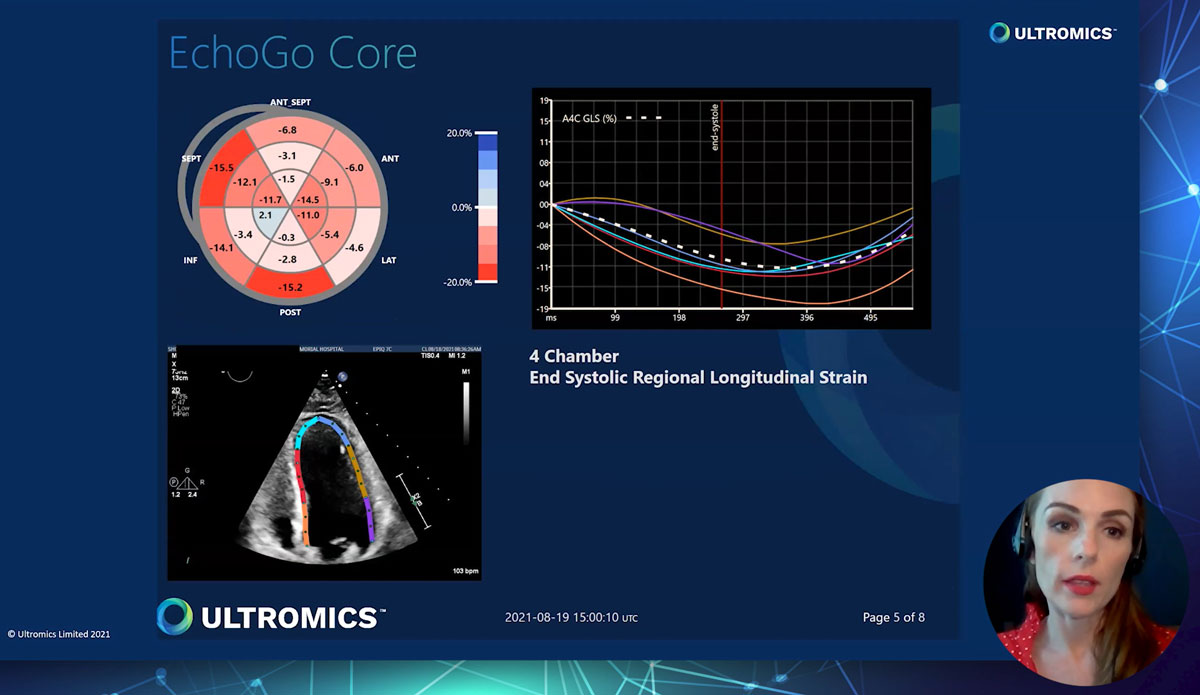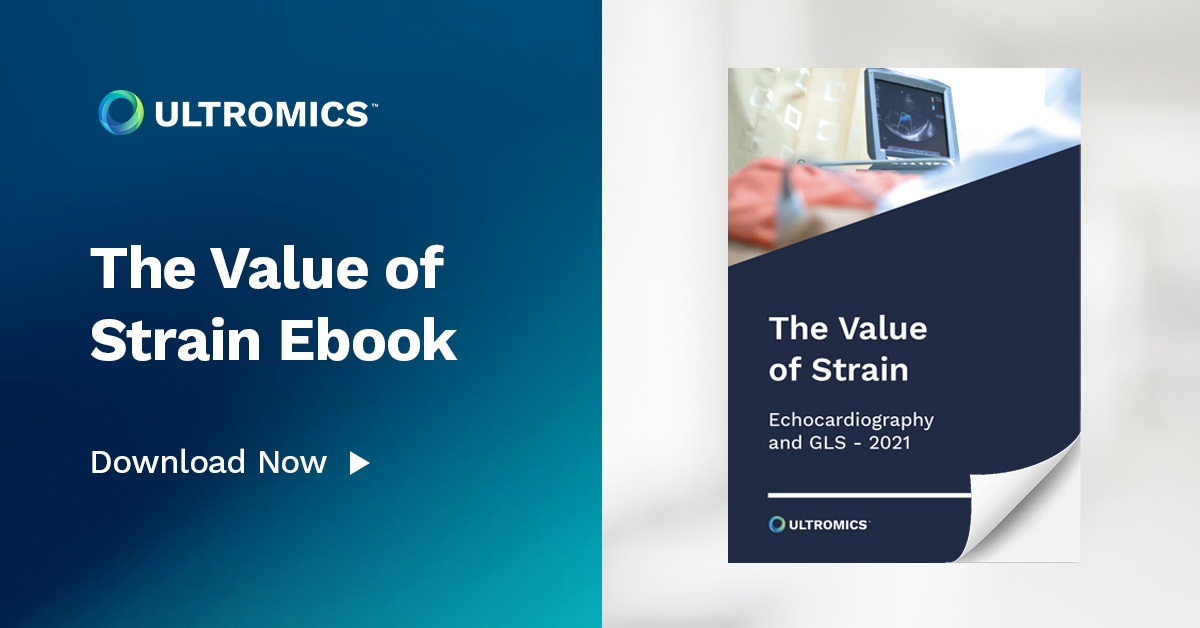
Takotsubo Cardiomyopathy Echo Case Study
- | By Ultromics
Takotsubo cardiomyopathy—also called “stress cardiomyopathy” and “broken heart syndrome” occurs when stress hormones or toxins disrupt the microvasculature of the heart after a physically or emotionally stressing event. Subsequently, the heart muscle does not get adequate blood supply and won’t contract as it should.
The left ventricle dilates, and in 75-80% of cases, the apex balloons while the basal segments continue to contract.
Ask any cardiologist and they’ll tell you an interesting Takotsubo case. Life’s various stressors impact all of us differently, and in some cases, can cause this deadly disease.
I worked in cardiology research in Scotland for many years and we did a study on Takostubo’s heart failure. There were so many memorable cases. One woman went into heart failure after losing her dog, then recovered, then did not go into heart failure when her husband died. But guess what happened when her second dog passed away? That’s right. Takotsubo’s cardiomyopathy.
Another woman went into Takotsubo after having failed the UK driver’s test 18 times. I don’t blame her. The United Kingdom is notorious for its difficult practical driving exam. I’m an excellent driver and had been driving in America for 20 years when I failed the UK test twice. (Third time’s the charm!) The point is, stress comes in many forms and can actually break our hearts!
Clinically, Takotsubo syndrome is diagnosed when a patient is suspected of having an acute myocardial infarction, yet cardiac catheterization shows no coronary blockage.
Revised Mayo Clinic diagnostic criteria include the following:
- Transient dyskinesis of the left ventricular (LV) midsegments
- Regional wall motion abnormalities beyond a single epicardial vascular distribution
- Absence of obstructive coronary artery disease or acute plaque rupture
- New electrocardiographic abnormalities or modest troponin elevation (T wave inversion)
- Absence of pheochromocytoma and myocarditis
- Apical ballooning on Echo
Echo Go software as a service measures left ventricular contours throughout the cardiac cycle and automatically selects systole and diastole with artificial intelligence in a matter of seconds.
We use the 4 chamber, 2 chamber, and 3 chamber views, but we are able to calculate global longitudinal strain (GLS) even if one or more of the views has poor image quality. GLS shows how the LV deforms in Takotsubo Syndrome.
In conclusion, global longitudinal strain shows us how each segment of the heart is functioning. It is therefore a more comprehensive analysis of heart function than ejection fraction alone and can differentiate patterns in specific cardiomyopathies.
In Takotsubo syndrome, 75-80% of patients show left ventricular contractility with apical hypokinesia and basal hypercontractility. Strain allows us to easily phenotype cardiomyopathies so that we can accurately diagnose patients.
